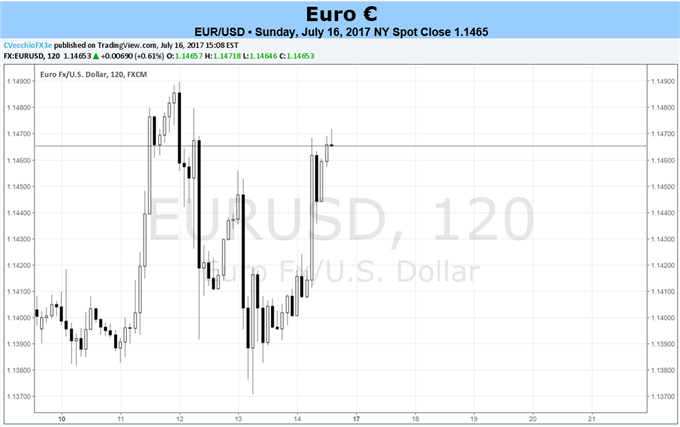
Fundamental Forecast for EUR/USD: Neutral
– The ECB meets this week, but it is an off-cycle meeting for staff projections, so no change in policy is expected. ECB President Draghi’s press conference is in the spotlight.
– Profit taking in the Euro is possible if the ECB takes issue with the rally in the exchange rate and underperformance in energy prices in recent weeks.
The Euro took a step back last week, even as the US Dollar suffered broadly, perhaps exposing the Euro as a currency whose good fortune has been priced in. The most recent driver, higher sovereign bond yields on the back of hawkish commentary from European Central Bank officials, had run its course.
Even with the ECB set to meet this Thursday for the July meeting, a lack of new staff economic projections (SEPs) should keep a lid on interest rate speculation. As a result, with the ECB set to keep rates unchanged, traders should be focusing on President Mario Draghi’s press conference for clues as to what the central bank will do next.
With the ECB quiet for some time about the FX channel, the Euro had been given some breathing room to rally against its peers. Yet the Euro’s strength may only be tolerated for so long. The ECB’s technical assumption for EUR/USD in 2017 is 1.0800; it closed last week just above $1.1450. Brent Oil, the energy input the ECB bases their inflation forecasts around, is forecast at $51.60 per barrel for 2017. Energy prices are underperforming the ECB’s forecast by -5.2%.
A few more months of a stronger Euro, weaker energy prices, and persistent underperformance in inflation readings, and it’s easy to envision the ECB taking issue with the market’s hawkish interpretation of the policy adjustments being made. For now, it seems officials are suggesting that a step down in the QE program could come as soon as September.The key point is that it’s just not going to be this week. Due to the fact that the ECB is one of many central banks that have fallen into a predictable pattern of when policy action is most likely to arrive – only when forecasts are updated – this means that September or December will likely be when any significant issues are raised.











Leave A Comment